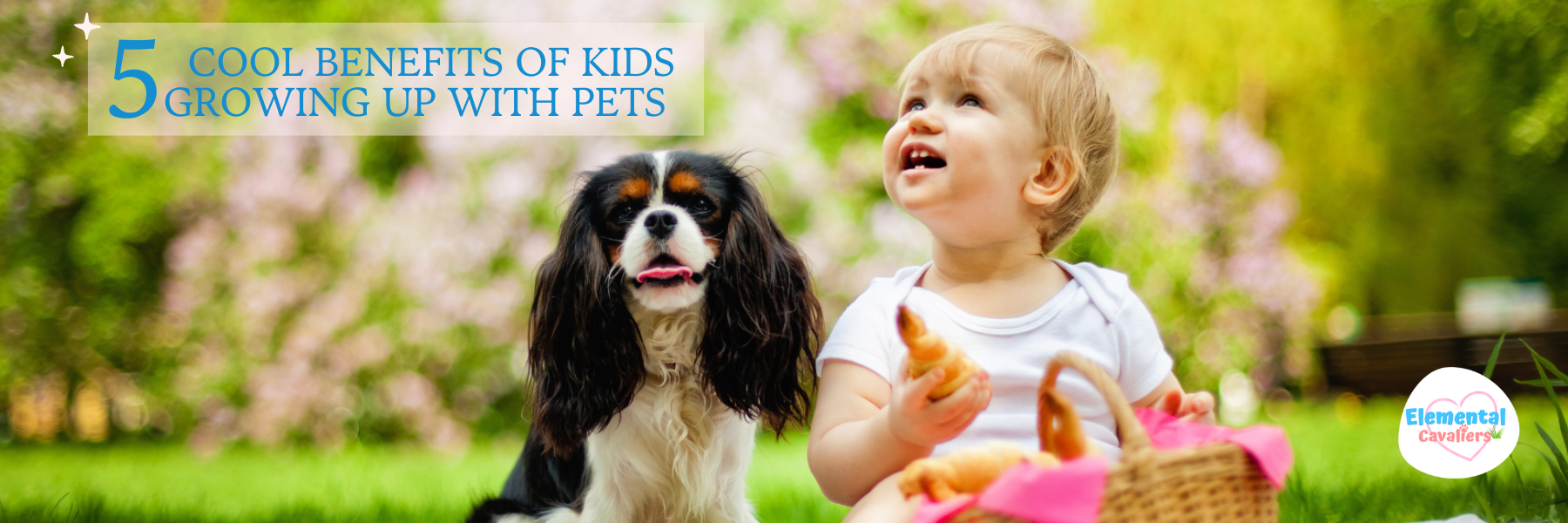Find out more about Children’s Awareness Month: https://nationaltoday.com/childrens-awareness-month/ & also https://www.daysoftheyear.com/days/childrens-awareness-month/
June is Children’s Awareness Month, with its founding traced back to the late 1990s, sometimes it is called ‘June for Kids’. The main focus is on promoting the well-being and health of children. In order to help in a little way, we’ve decided to look at some really surprising key benefits kids gain from growing up in households with pets. The bond between animal pets and people has been long-known and documented. They don’t call dogs ‘man’s best friend’ for no reason.
The amount of benefits our beloved pets give to children are astounding to say the least. Let’s discover why kids thrive with their pets at their side!
1: Active Lifestyle ~ Gained for All the Family

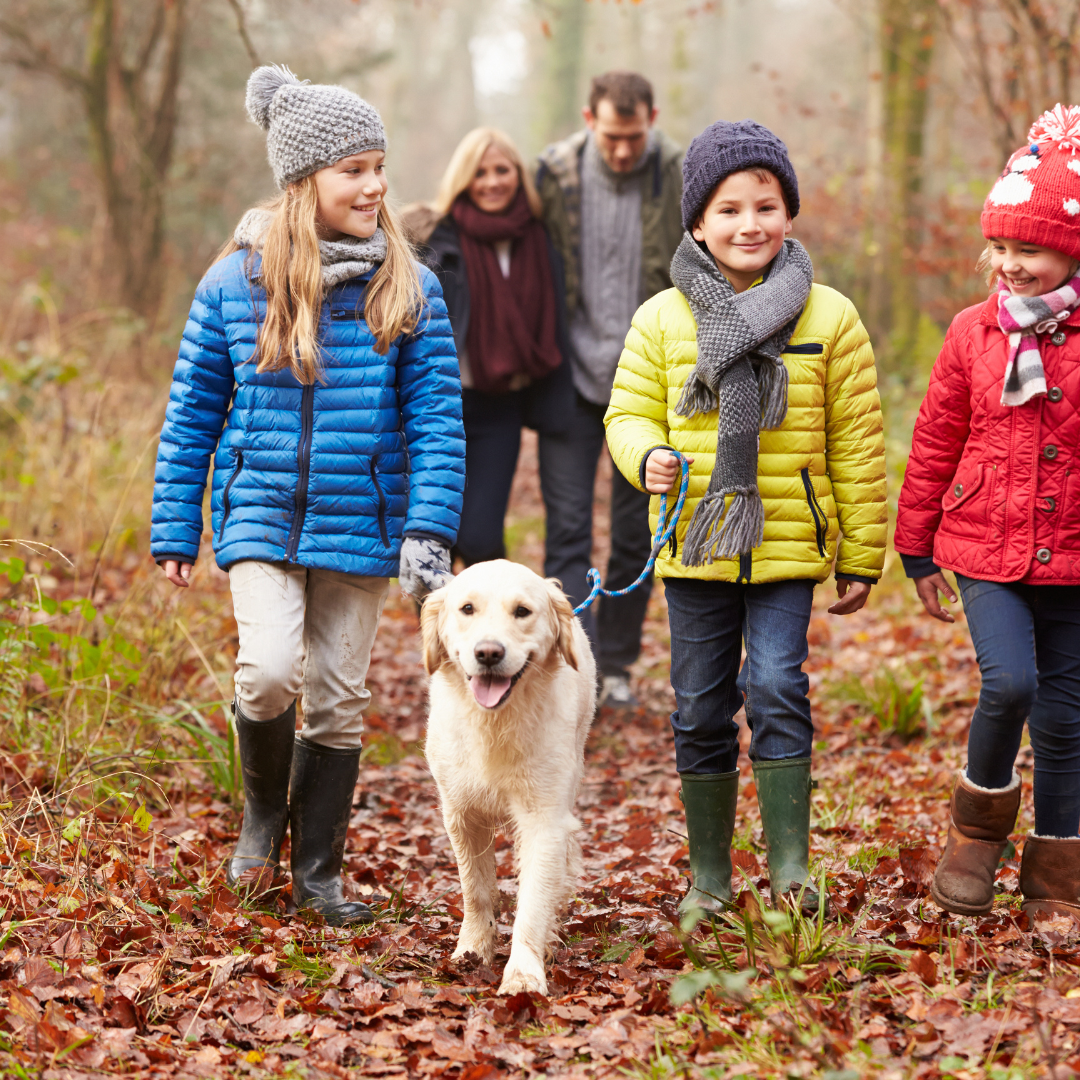

Child/ Children in the home + dog(s) = more exercise for the entire family including the children.
Dogs need walking, playing with, possibly running and much more. Perhaps your dog is a more active breed and goes to classes or has a group focusing on something like agility.1 Maybe you go on family hikes and camping together. Whatever the method and delivery, dogs need exercise to keep their bodies and minds healthy and active. Puppies require less activity and certainly no jumping until they’re much older. In a similar way, seniors will need graded activity, but all dogs need a certain level, specific and tailored to their needs.
With the rates of obesity in children these days, dogs making sure kids get activity is a good thing. According to the CDC, in the USA,2 approximately 1 in 5 of all children and adolescents in the U.S are obese. According to the NHS back here in England,3 there is an association between children being obese and overweight, with that of their parents.
A 2010 study from St George’s University of London,4 found that children with dogs spent on average 11 more minutes of activity a day than those children without dogs (that’s 325 minutes ~ or over 5 hours in total). We’re learning what works in terms of exercise and length of time vs benefits & discovering that maybe less (time not effort!) can be more,5 like the emergence of HIIT training for instance,6 with short workouts reaping maximum gains for adults. This means 11 minutes extra activity daily for kids with dogs is a massive amount.
One study focusing on a 10-year-old boy with Cerebral Palsy and animal-assisted therapy found that the boy’s physical, emotional and social wellbeing increased significantly,7 plus so too did the bond between the dog and child. The animal-assisted therapy benefitted the dog as well as the boy!
Whether the child is physically able or not, being more active with a dog will also generate a true love for the great outdoors, promoting a healthy lifestyle naturally.
Sharing life with a dog – or dogs really can have a positive impact on children’s healthy living – and yours!
2: Learning Benefits for Children with Animals

You may be thinking ‘how on earth can pets help with a kid’s learning’? Well, for those who are lucky enough to have dogs and cats growing up, learning to read aloud to their pets actually boosts their literacy skills (reading & writing).
It’s a well-known fact that in the education world, dogs (in particular) as therapy animals have been used to help children’s learning environments in special-needs schools for a long time now. Additionally, there have been a number of studies looking at literacy programs outside of the academic environment. A 2017 study following second-grade kids,8 (usually 7-8 years old) read to a dog within their school classroom environment.9 They found that the children that read aloud to dogs every week had their academic reading attitudes increased massively, resulting in positive attitudes to academic reading and learning.
Helping children ignite a passion for reading
To help kids get a passion for reading, The Kennel Club Educational Trust,10 has funded an inspirational programme called ‘Bark and Read’,11 that works with charities which tackle literacy issues within UK schools through volunteers taking their dogs into schools and the children read to them. Confidence-building, providing a calming effect on the young readers just by their presence being there, encouragement from the dogs listening and ultimately building confidence and enthusiasm are proven to be the results.
Verbal Communication
Dogs can help kids with their verbal communication as well. For children already able to speak clearly, teaching a dog behaviour skills and helping to teach tricks can further build on a child’s vocabulary and enhances the clearness and clarity of their speech for the dog to be able to understand.
Younger children will want to be able to communicate with their furry friends, so will be encouraged to learn the basic language spoken by the rest of their family to the dogs, such as ‘sit’, the dog’s name and so on. In fact, by the age of around 7-9 months old a baby can recognise their own name (not just beginning to recognise), and the names of those close around them, including the dog’s! Ways to teach a baby their name include: talking to them daily, and even having one-sided conversations, basically narrating what you’re doing.12 Homes with dogs and cats will end up speaking relating to their pets and therefore this vocabulary will go into the amazing memory-bank of words the babies know.
3: Allergies & Asthma

In one study,13 about 400 babies were followed from birth to one year old to see whether having dogs and cats had any bearing on infections & respiratory symptoms. The babies who had dogs at home were healthier than those that didn’t, with far fewer respiratory tract infections, needed fewer antibiotics and had less frequent otitis (inner ear infections). Basically, there was a correlation between the amount of exposure to dogs and cats weekly/ daily/ monthly/ yearly and decreases shown, reflecting findings from similar studies. This indicates that having a dog or cat in the first year of life for young babies can have a good impact on their immune system & overall health.
A totally huge Swedish study looked at data from over a million children between 2001 and 2010 found that exposure to dogs in the first year of life lowered the chance of developing childhood asthma by a whopping 15%!14 The leading scientist of the study mentioned how the data was interesting because earlier studies have shown the reduction in asthma with farm animals, and that possibly this is because of the ‘hygiene hypothesis’. The data obtained from this very comprehensive and long-standing study showed that the risk of developing allergies and asthma can be lowered for children growing up with pets.
We’ve looked at respiratory tract infections, ear infections, asthma, some allergic conditions and obesity. Now, it’s the turn of food allergies. Food allergy is said to affect 3-6% children in the developed world,16 and food hypersensitivity for both children and adults is estimated between 1-10%.17 Professor Irwin McLean of the University of Dundee said to The Sunday Post that:
“Living with dogs was associated with a 90% reduction in the odds of developing a food allergy”,18 from her co-led study looking at dog ownership and whether living with dogs offered any protection from food allergies developing. 49 babies were researched in total. Professor McLean explained to The Sunday Post that: “None of the 49 infants living with at least two dogs developed a food allergy,” 18 since the study’s findings suggested that living with two or more dogs was preferable to one, and that dogs provided greater range to exposure to microscopic particles than cats did, which are associated with protection from development of asthma and allergies. Whilst this isn’t a large study, it’s findings are significant.
4: Pets Teach Kids Essential Social & Life Skills
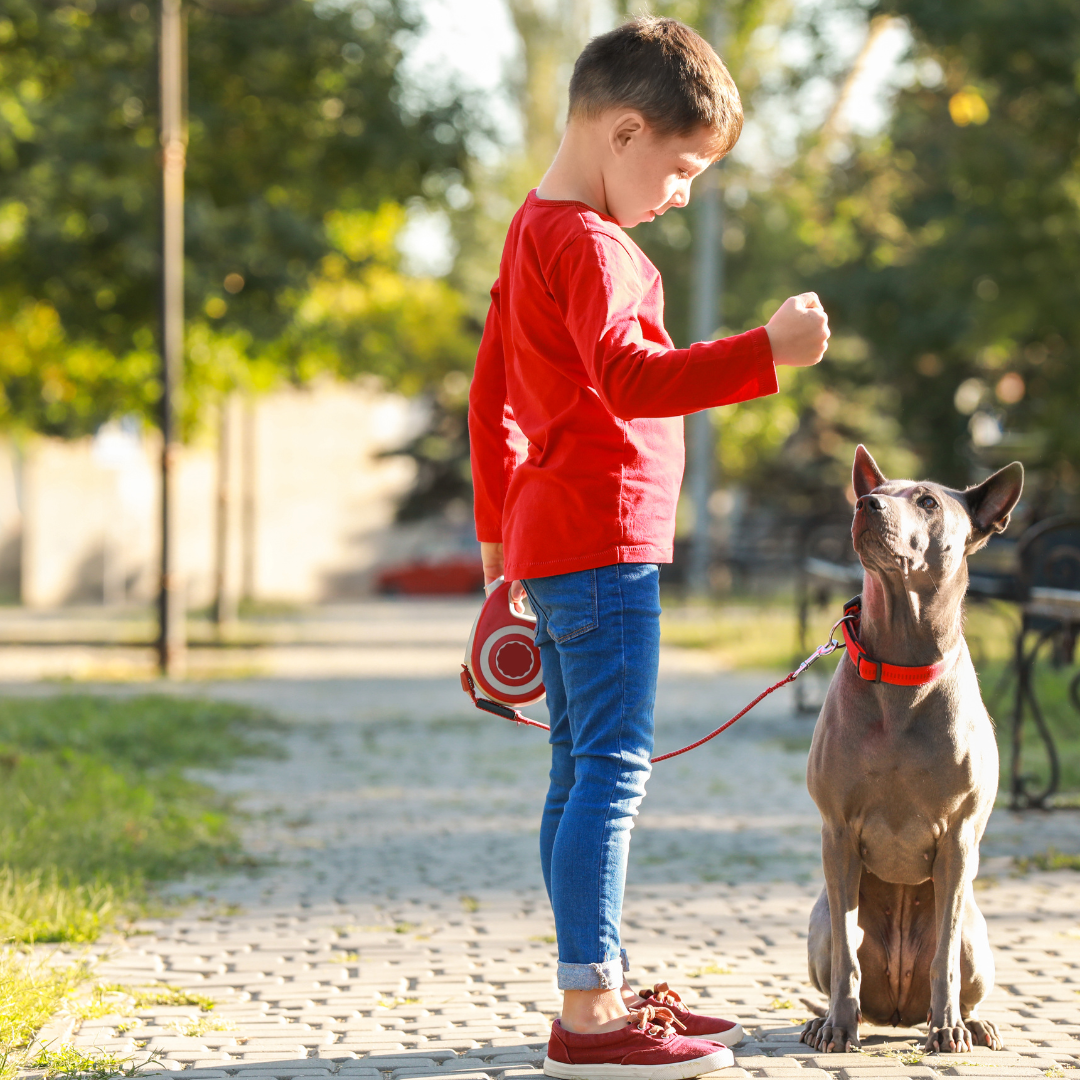
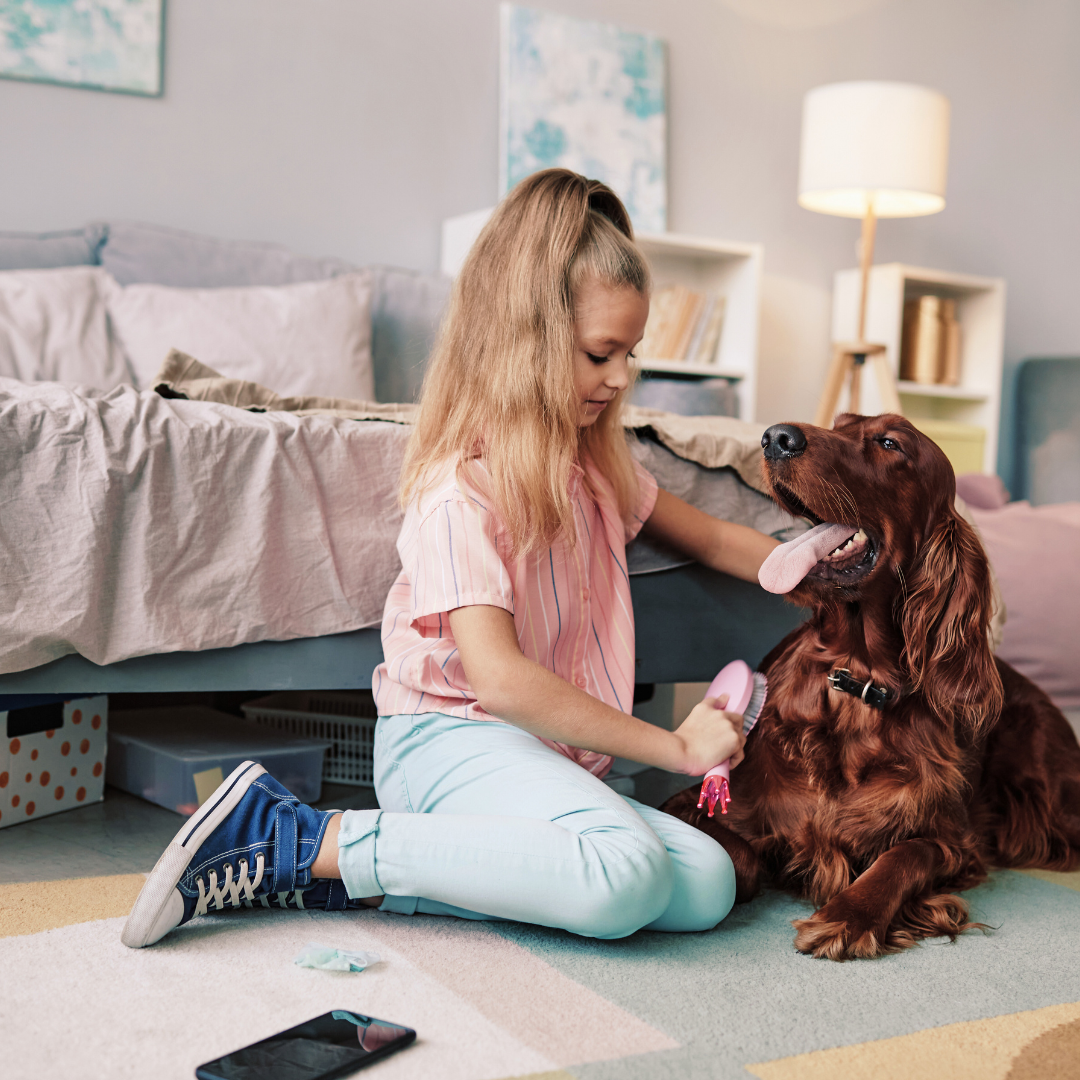
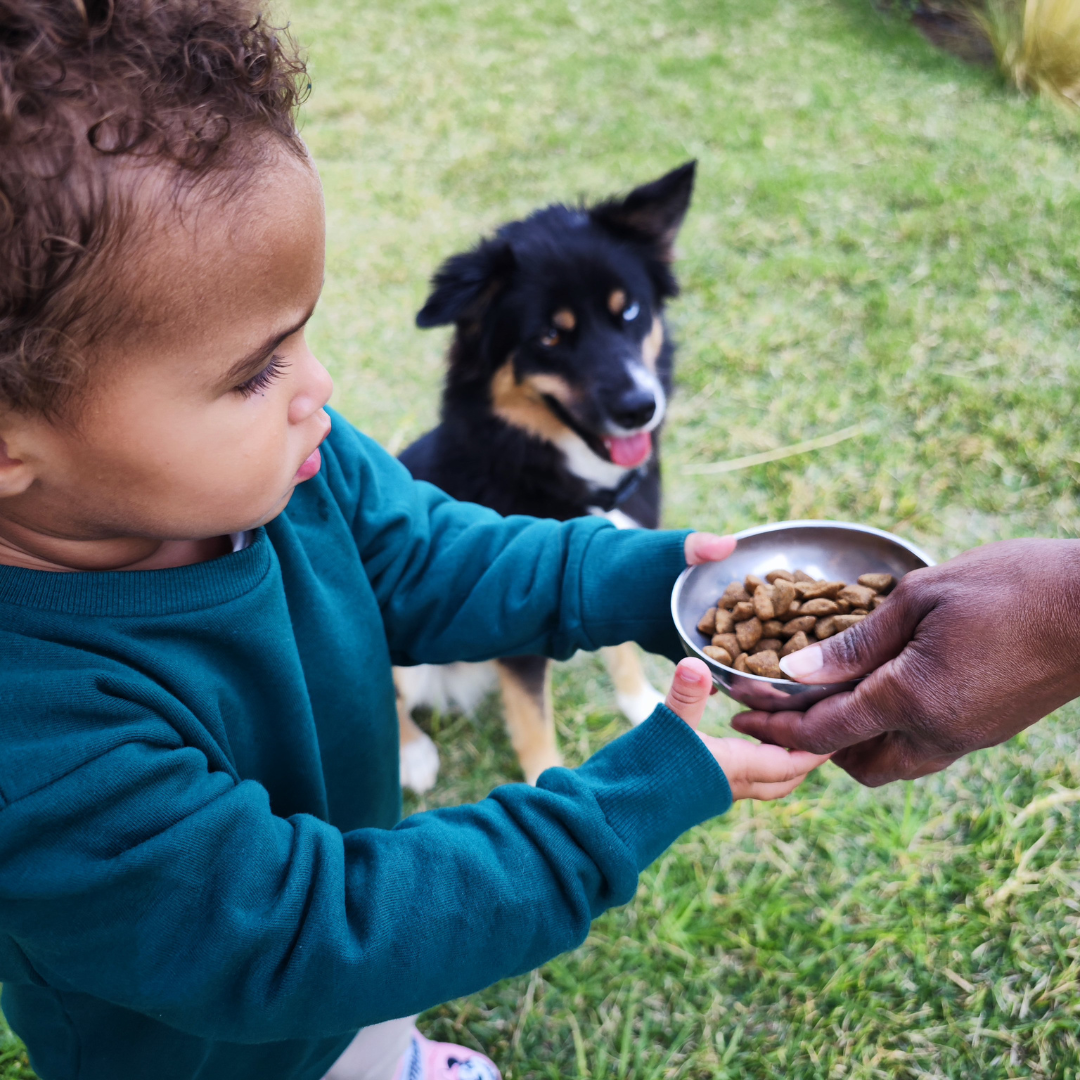
58% of pet families say that their pets help to teach their children responsibility (according to the American Pet Product Association’s 2011-2012 National Pet Owners Survey).20 It’s true that even little children can help with simple tasks, they can fill up food or water bowls, or help to refresh straw for smaller household pets. It makes them feel really good and helps their confidence immensely. They see all the requirements that pets need, such as: grooming, exercise, commitment and care. Through this caring they gain compassion and empathy.
Compassion and empathy are natural life skills/ social skills to manifest from caring about the animal, and animals in general. Pets are totally dependent on us tending to their needs. Children learn how to look out for their family pet(s), looking for telling signs (the animal’s way of communicating with us), like is the dog sitting by the back door needing to toilet? Is the cat thirsty? If the pet is sound-sensitive and it happens to be New Year’s Eve with all the fireworks, does the pet need a cuddle or some extra fuss or distraction?
Respect towards animals and others is also gained since children learn to be patient and not snatch toys from the pet. They learn how to be mindful and respect the animal when they’re sleeping, so as not to disturb them. They learn to not shout when the pet is napping, and instead be quiet. Pets therefore help teach children about emotional intelligence.
5: Pets Offer Friendship & Can Make Children Happier
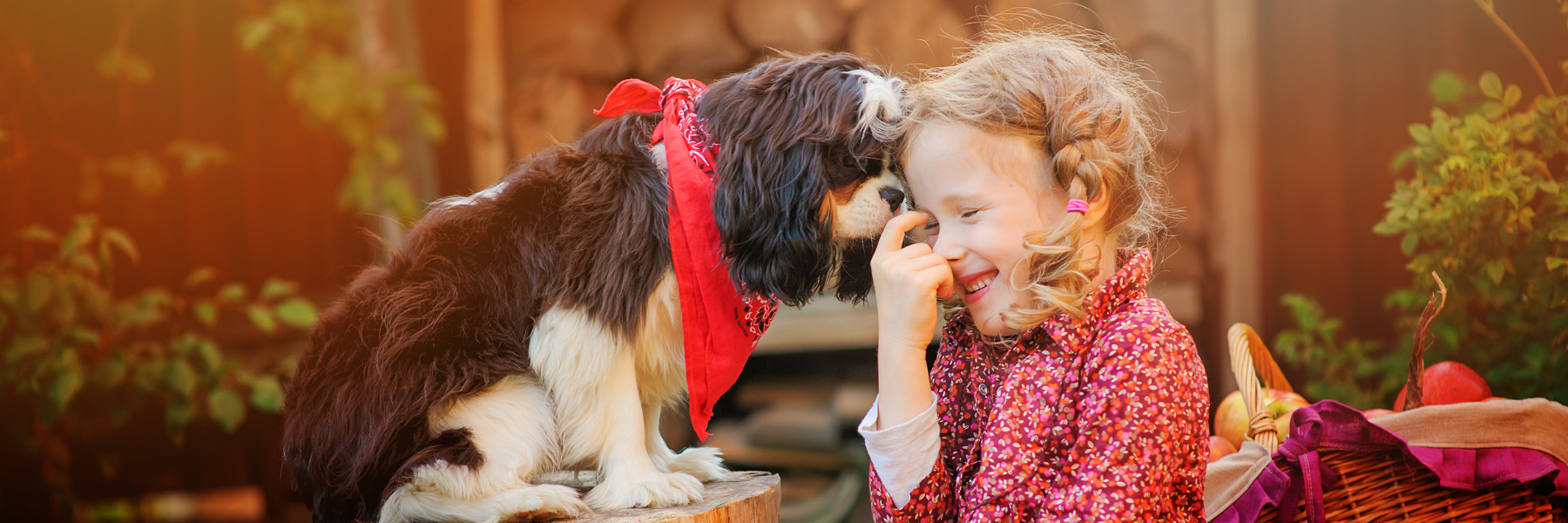
Animals offer children emotional support. They give unconditional love, they’re non-judgemental, and totally loyal. They can comfort a child and offer someone to talk to in times of distress. They keep secrets told to them and they’re excellent company for children of all ages. Pets are great for the well-being and mental health of kids of all ages, including teens. Through the support offered from the pet, company and trust is mutually given and taken. Children are never lonely with their best buddy by their side.
Cuddling a dog apparently releases the hormone oxytocin, commonly referred to as the ‘love hormone’ or ‘bonding hormone’ or ‘cuddle hormone’, since it helps mothers bond with their babies. It is said that dopamine is also released (associated with pleasure) and this boosts a person’s mood.21 These hormones help to lower stress levels. According to the late Rebecca Johnson, PhD, a professor who established the Research Center for Human/Animal Interaction (ReCHAI) at the University of Missouri College of Veterinary Medicine:
“Oxytocin helps us feel happy and trusting”, which is “very beneficial for us”.22
A 2017 study by the University of Florida,23 showed that pet dogs were able to lower cortisol levels (related to stress and the ‘fight or flight’ response), and be more of a stress-buster than even their parents for the kids involved.24 A 2015 study suggested that children who grew up with a dog had a decreased probability of anxiety in childhood.25 Older studies (from 1988 and 1984), showed that talking to a dog and petting a dog lower blood pressure,26 especially when there is an established bond (family pet for example).27 Studies seem to suggest then that:
pets can help to lower blood pressure, stress levels, and anxiety whilst making children happier.
More Food For Thought ~

The more we understand, the more we can dig for deeper insight into the benefits between animals and children. Recently I became a Specialist for Children & Dogs (which actually didn’t incorporate anything I’ve written here in this blog post) but means instead that I now have the knowledge to help families further that have children & wish to adopt a puppy from a responsible breeder (like myself) or already have a dog in their homes.
Firstly, please read further before jumping into getting a pet. Don’t just take my word for the wonderful benefits kids can have – check information out for yourself & learn more about which animal & breed will be suited to your family & to your lifestyle first.
I also realise I should point out to you that, whilst having an animal as a member of your family is extremely beneficial to a developing child, if you yourself, or a member of your family is fearful of let’s say a dog, it would be recommended that until that fear is conquered – please leave the idea of a dog until that time happens. It would be ruthlessly unfair and let’s just say it for what it is – cruel – to force a child to live with the object of his or her fears. The dog would need to stay downstairs or out of the way most of the dog’s life, missing out on crucial social time with the family, being alone and lonely. Or, the child would be terrified to move around home, scared to leave the bedroom or other place. That is not an environment conducive to optimum learning nor development for the child; that child wouldn’t be able to receive the wonderful benefits of the dog being part of the family’s life being afraid, let alone the amount of stress for everyone, and also the unnecessary stress for the animal also. However, with help from professionals (and there are some really great ones out there) once the child was unafraid – of course choose the right breed for your family, and a responsible breeder & take advantage of all the many many benefits of sharing your life with animals.
From comfort, support, lending a helping paw with learning, giving physical benefits, emotional benefits, teaching essential social skills, such as empathy and responsibilities, and so much more… It may just be a good time to find that puppy for your child to grow up with – Man’s Best Friend!.. Or, better still – have your child live with a few!
I do so hope you enjoyed this blog post. Wow – it was quite a long one looking at it finished! As you can imagine there was much more information I would have loved to have included but it would have been far too long, so I’ll have to save for another time. Thank you for reading this entire way down; I hope this has helped at best, or at least given ‘food for thought’.
Happy reading, until the next time,
Suzie.
Ethical & Responsible Breeder, Elemental Cavaliers.

References
1). The Kennel Club (2024) Agility. Available at: https://www.thekennelclub.org.uk/events-and-activities/agility/
2). CDC (2024) Childhood Obesity Facts. Available at: https://www.cdc.gov/obesity/php/data-research/childhood-obesity-facts.html
3). NHS England (2019) Statistics on Obesity, Physical Activity and Diet, England, 2019. Available at: https://digital.nhs.uk/data-and-information/publications/statistical/statistics-on-obesity-physical-activity-and-diet/statistics-on-obesity-physical-activity-and-diet-england-2019/part-4-childhood-obesity
4). LiveScience (2010) Kids Who Own Dogs Are More Active. Available at: https://www.livescience.com/8633-kids-dogs-active.html
5). Yeager, s. and Mateo, A. (n.d.) ‘The Benefits of 15-Minute Workouts Will Blow Your Mind’, Women’s Health, Available at: https://www.womenshealthmag.com/fitness/a19037973/15-minute-workout-benefits/
6). Wikipedia (n.d.) High-intensity interval training. Available at: https://en.wikipedia.org/wiki/High-intensity_interval_training
7). Tepfer, A. et al (2017) ‘Family Dog-Assisted Adpated Physical Activity: A Case Study’, Animals, 7(5) 35, https://doi.org/10.3390/ani7050035
8). Wikipedia (n.d.) Second grade. Available at: https://en.wikipedia.org/wiki/Second_grade
9). Linder, D. E. et al (2017) ‘Effects of an Animal-Assisted Intervention on Reading Skills and Attitudes in Second Grade Students’, Early Childhood Education Journal, 46, pp. 323-329. doi: 10.1007/s10643-017-0862-x
10). The Kennel Club (n.d.) The Kennel Club Educational Trust. Available at: https://www.thekennelclub.org.uk/about-us/charity-work/the-kennel-club-educational-trust/
11). The Kennel Club (n.d.) Bark and Read. Available at: https://www.thekennelclub.org.uk/about-us/charity-work/the-kennel-club-educational-trust/
12). Aggarwal, N. (2023) ‘When Do Babies Recognize Their Name?’, The Bump, 11 December. Available at: https://www.thebump.com/a/when-do-babies-recognize-their-name
13). Bergroth, E. et al (2012) ‘Respiratory Tract Illnesses During the First Year of Life: Effect of Dog and Cat Contacts’, Pediatrics, 130(2), pp.211-220. Available at: https://publications.aap.org/pediatrics/article-abstract/130/2/211/29895/Respiratory-Tract-Illnesses-During-the-First-Year?redirectedFrom=fulltext?autologincheck=redirected
14). Randall, S. (2015) ‘Does Growing Up With a Dog Reduce A Child’s Risk of Developing Asthma?’, Top Dog Tips, 10 November. Available at: https://topdogtips.com/growing-dog-reduce-childs-risk-developing-asthma/
15). Tun, H. M. et al (2017) ‘Exposure to household furry pets influences the gut microbiota of infants at 3-4 months following various birth scenarios’, Microbiome, 5(1), doi: 10.1186/s40168-017-0254-x
16). BSACI (n.d.) Allergy in Children. Available at: https://www.bsaci.org/patients/most-common-allergies/allergy-in-children/
17). Allergy UK (n.d.) Statistics and Figures: Allergy Prevalence: Useful Facts and Figures. Available at: https://www.allergyuk.org/about-allergy/statistics-and-figures/
18). McDonald, T. (2019) ‘A child’s best friend: How a dog can stop kids getting food allergies’, The Sunday Post, 3 June. Available at: https://www.sundaypost.com/fp/a-childs-best-friend-how-a-dog-can-stop-kids-getting-food-allergies/
19). Okabe, H. et al (2023) ‘Associations between fetal or infancy pet exposure and food allergies: The Japan Environment and Children’s Study’, PLOS ONE, 18(3) e0282725. https://doi.org/10.1371/journal.pone.0282725
20). Pet MD (2016) Can Dogs Teach Kids Responsibility? Available at: https://www.petmd.com/dog/care/can-dogs-teach-kids-responsibility
21). Petit, H. (2018) ‘What having a dog does to your brain and body: Scientist reveals how bonding with canines triggers the release of dopamine and oxytocin in the same way as loving a child’, The Daily Mail / The Mail Online, 6 June. Available at: https://www.dailymail.co.uk/sciencetech/article-5807069/Dogs-trigger-release-dopamine-oxytocin-way-children.html
22). Rovner, J. (2012) ‘Pet Therapy: How Animals and Humans Heal Each Other’, NPR, 5 March. Available at: https://www.npr.org/sections/health-shots/2012/03/09/146583986/pet-therapy-how-animals-and-humans-heal-each-other
23). Kertes, D. et al (2017) ‘Effect of Pet Dogs on Children’s Perceived Stress and Cortisol Stress Response’, Social Development, 26, pp. 382-401. https://doi.org/10.1111/sode.12203
24). UF News (2017) ‘Pet dogs help kids feel less stressed, study finds’, University of Florida, 9 May. Available at: https://news.ufl.edu/articles/2017/05/pet-dogs-help-kids-feel-less-stressed-study-finds.html
25). Gadomski, A. et al; (2015) ‘Pet Dogs and Children’s Health: Opportunities for Chronic Disease Prevention?’, Preventing Chronic Disease, 12. http://dx.doi.org/10.5888/pcd12.150204 Available at: https://www.cdc.gov/pcd/issues/2015/15_0204.htm
26). Vormbrock, J. K., & Grossberg, J. M. (1988). ‘Cardiovascular effects of human-pet dog interactions’. Journal of Behavioral Medicine, 11(5), pp. 509–517. https://doi.org/10.1007/BF00844843
27). Baun, M. M., Bergstrom, N., Langston, N. F., & Thoma, L. (1984). ‘Physiological effects of human/companion animal bonding’. Nursing Research, 33(3), 126–129.
Obviously, it goes without saying (but I’m writing it anyway for clarity) that if/ once you have used the links within the blog post above in order to leave our site, you should note that we do not have any control over that other website. Therefore, we cannot be responsible for the protection and privacy of any information which you provide whilst visiting such sites and such sites are not governed by our privacy policy statement. You should exercise caution and look at the privacy statement applicable to the website in question. For more information, please see our privacy policy. https://elementalcavaliers.co.uk/privacy-policy/

